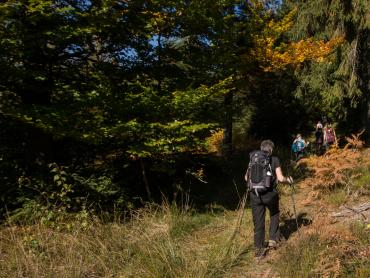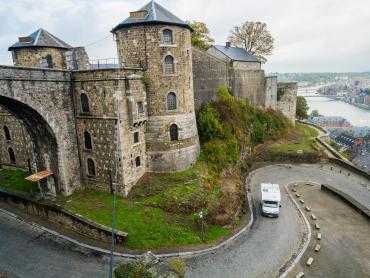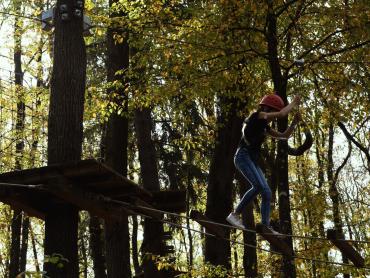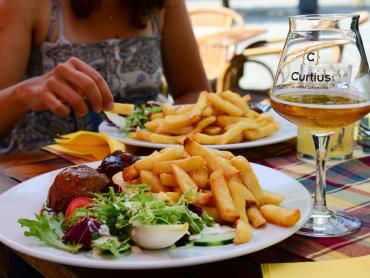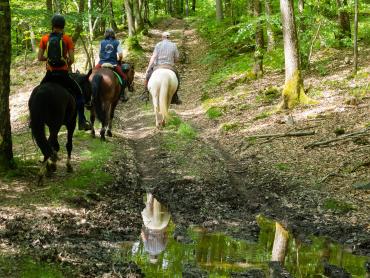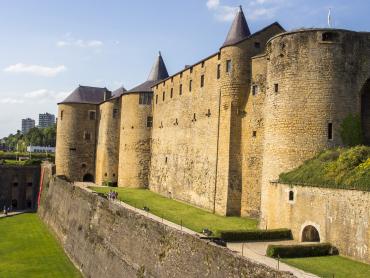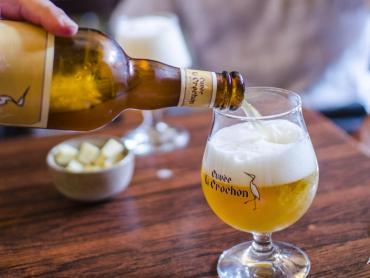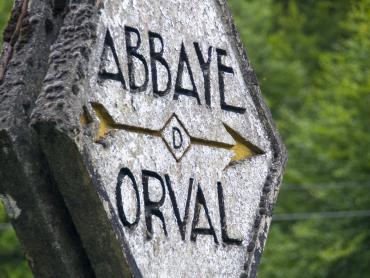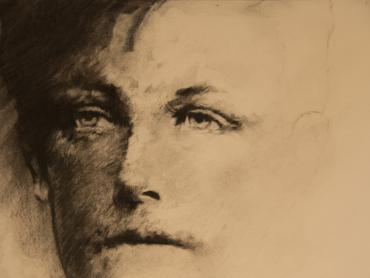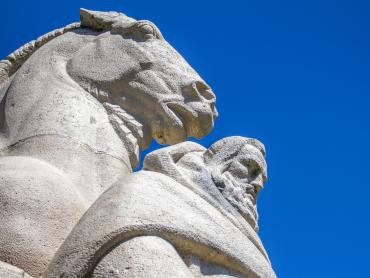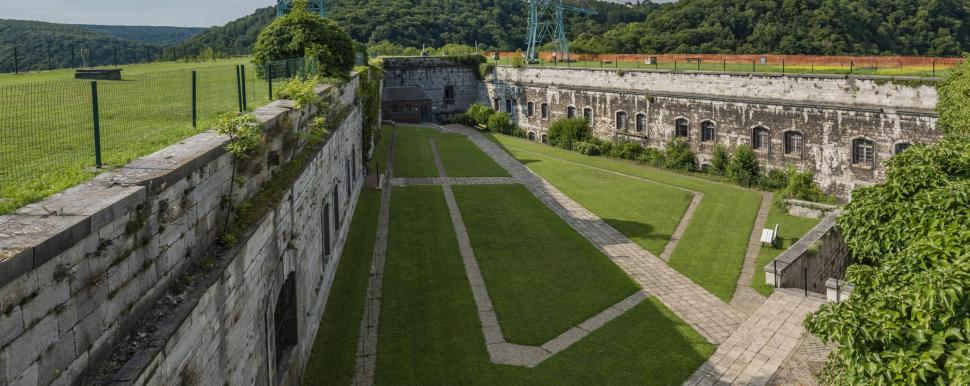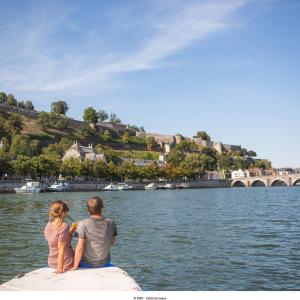The Forts of
the Province of Liège
Between 1888 and 1891, twelve concrete forts were built in a ring around the city of Liège to the plan of General Brialmont. Their purpose was to create a defensive line that would delay any German advance from the East and provide time for the Belgian army to mobilise. Their fortifications were concentrated on their outward-facing sides, while the inner sides (facing the centre of Liège) were less well-protected as the policy was that, should they fall into enemy hands, they could be destroyed by Belgian artillery from the city centre. At the beginning of the First World war, they delayed the German advance by 12 days in August 1914 during the Battle of Liège.
In 1927, a report recommended the building of a further seven forts to form an outer ring of the fortified position, and, of these, four were built. In the Second World War, they delayed the German blitzkrieg advance in May 1940 by eight days.
The original twelve forts The twelve Brialmont forts were equipped with 210-mm, 150-mm and 120-mm artillery in armoured metal mountings that could be raised above ground level to fire and then lowered underground for protection. Each fort was provided with enough ammunition and supplies for their garrisons to resist a month’s siege. Their concrete walls could resist 210-mm shells. At the outbreak of the First World War, they were under the command of General Leman, based in the centre of Liège. The initial German attack on 4 August 1914 was repelled, but a small detachment of German troops slipped between the forts and captured the centre of Liège, including the vital military communications centre. Leman and his staff retreated to one of the forts and the Germans moved in their field artillery to the Belleflamme redoubt at Jupille and began bombarding the less well-protected rears of the forts.
On 13 August, a battery of German state-of-the-art 420-mm guns (nicknamed “Big Bertha”) arrived by railway at the village of Mortier and began firing 500-kg high-altitude and high-explosive shells at the forts, with devastating results. The last of the forts surrendered on 16 August, but their unexpected resistance had slowed the German advance on France, from which it had diverted 60,000 German troops. It had also given the French time to reorganise their defences and troop positions. The Allied High Command ensured the press published many articles praising the stubborn resistance of Liège, and it was the first non-French city to be awarded the Légion d'honneur for its contribution to the Allied war effort.
Today, parts of most of these forts are still visible and some can be visited. They are:
FORT OF BARCHON
The most northerly of the original forts, it was the first to surrender on 8 August 1914 as its commander feared his men would be suffocated by gas and fumes in the poorly ventilated underground structure. It was rebuilt in the 1930s and was captured again by the Germans on 18 May 1940.
More information at: www.fortbarchon.be
FORT OF BONCELLES
Located between the Rivers Meuse and Ourthe, only its ventilation tower is now visible following its destruction in May 1940. There is a visitors’ centre with an exhibition and an educational trail, as well as a collection of armoured vehicles.
More information at: www.provincedeliege.be
The fort of Chaudfontaine, the new Fort Aventure & Events, the perfect day with friends !
FORT OF CHAUDFONTAINE
This square fort protected the Vesdre valley. At 7.30 am on 12 August 1914, a German 420-mm shell pierced the concrete and exploded in the fort’s ammunition store, causing a devastating explosion that killed 127 of its garrison, after which the survivors surrendered. Today it is used by “Fort Adventure” as a venue for various types of challenges and games.
More information at: www.fortaventurechaudfontaine.com
FORT OF EVEGNÉE
This fort survived both world wars and was purchased in 1971 for use as an explosives store by the Forges de Zeebruges steelworks. Today there are two secure areas used for manufacturing and testing that are not open to the public.
FORT OF FLÉMALLE
This large square fort occupied a strategic position above the River Meuse and the road from Liège to Namur. It was severely damaged by a 500-kg German shell in 1914 and was rebuilt in the 1930s. In May 1940 it was attacked from the air by German Stuka bombers. It has a museum and guided tours are available.
More information at: www.fortdeflemalle.wixsite.com
FORT OF FLÉRON
Its successful resistance to attacks on Liège in both world wars was not enough to save it from demolition in the 1950s to make way for the Fort housing estate.
FORT OF HOLLOGNE
A smaller, triangular fort, it had a central store with long-range guns in its domed top, and three smaller artillery emplacements in its corners, surrounded by a dry moat. Today it can be visited on guided tours led by volunteers once a month.
More information at: www.fortdehollogneliege.be
FORT OF LIERS
This fort emerged relatively unscathed from the Battle of Liège in 1914 and was used as a place of execution by firing squad of prisoners condemned to death by the Belgian military courts after 1918. Today it is used as a test laboratory for aircraft jet engines by Techspace Aero and is not open to the public.
FORT OF EMBOURG
This trapezoid-shaped fort was one of the smallest and had a garrison of 350 troops. Despite repelling several German attacks from 6 to 11 August 1914, it finally succumbed to a sustained 36-hour artillery barrage and surrendered on 13 August. Its entrance and all its guns had been destroyed and it was the threat of suffocation of its garrison by gas in its ventilation system that led to its surrender.
More information at: www.landofmemory.eu
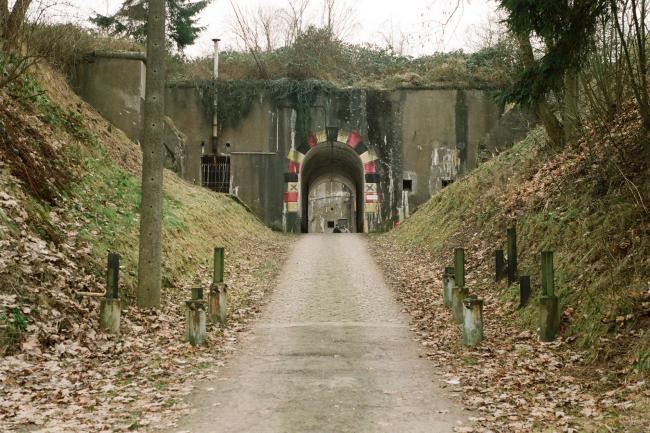
FORT OF LANTIN
This is the only one of the twelve forts to have survived unaltered since 1914. It is hidden under a wooded hill in the countryside. Visitors can use an audio-guide or be guided by a volunteer.
More information at www.fortdelantin.be
FORT OF LONCIN
This is the most famous of the Liège forts and is a war grave: on 15 August 1914, a German 420-mm shell scored a direct hit on its ammunition store, causing a massive explosion which blew the fort to smithereens and killed 350 of its garrison under the debris. General Leman was rescued, injured, from the wreckage and taken to Germany as a prisoner of war. Today the site has a museum and visitors’ centre that regularly hosts special events and guided tours.
More information at: www.fortdeloncin.be
FORT OF PONTISSE
This was the first of the forts to be bombarded by 420-mm shells fired by a “Big Bertha” gun. It covered an area of just over 3 hectares, and 100,000 cubic metres of concrete were used in its construction. It had a garrison of 370. It was attacked again in 1940 and surrendered on 18 May. Guided tours by volunteers are available if booked in advance via the Liège Tourist Information Centre (www.visitezliege.be)
The four 1930s forts
The 1927 report recommended rebuilding the original forts that had not been completely destroyed and adding seven new forts. The planned forts at Sougné-Remouchamps, Comblain-au-Pont and Les Waides were not built due to lack of funds, but the following four forts were built and survive today:
FORT OF AUBIN-NEUFCHÂTEAU
It resisted multiple assaults, which left 2,000 German soldiers dead, for 11 days before surrendering on 22 May 1940 due to running out of ammunition. Seven of its garrison died and 11 were injured in the battle for the fort. From 1942 onwards it was used to test German armour-piercing artillery shells. It is now open for guided tours on the third Sunday of each month.
More information at www.fort-aubin-neufchateau.be
FORT OF BATTICE
This fort has 4 120-mm guns and 6 75-mm guns and a garrison of 750. In May 1940, it resisted German attacks for 12 days until an air-raid by Stuka dive-bombers scored a direct hit which forced its garrison to surrender on 22 May 1940, having lost 34 comrades in the battle. Today it is open to the public on the last Saturday of each month for guided tours that last about 3 hours 30 minutes.
More information at www.fort-battice.net
FORT OF ÉBEN-ÉMAEL
This was the largest of the new forts and protected three bridges over the strategic obstacle of the Albert Canal. It was equipped with 6 120-mm guns and 16 75-mm guns and a garrison of 1,200. As the canal bridges were strategic targets for the German advance in 1940, it was the first fort to be attacked, on 10 May 1940, when 493 German paratroopers landed in gliders on the roof of the fort and near the canal bridges. They were able to disable the fort’s guns with high explosives and take its garrison prisoner in a few hours, but the Belgian defenders did manage to blow up one of the three bridges over the canal before surrendering. Today, visitors can follow guided tours around the fort and its museum.
More information at www.fort-eben-emael.be
FORT OF TANCRÉMONT
This was the smallest of the new forts and the last to be completed, in 1938. It had a garrison of 565 and 4 75-mm guns. On 22 May 1940, the Germans offered its garrison the chance to surrender, but were refused, so they simply by-passed the fort in their advance. The fort was finally ordered to surrender on 29 May by the Belgian commander-in-chief and its garrison were taken as prisoners of war to Galicia. Today, guided tours can be arranged on request.
More information at www.fort-de-tancremont.be
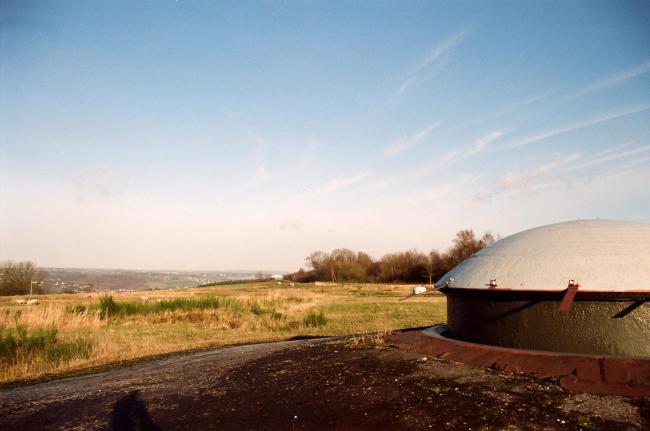
FORT OF HUY
In the Province of Liège, you can also visit the citadel fort that towers above the town of Huy. It was built by the Dutch army in 1818 when modern-day Belgium was part of the United Kingdom of the Netherlands, and was incorporated into the Belgian Meuse defences in 1880. It was captured by the German army in 1914 and used as a German military prison through the First World War. In 1940, the invading German army captured it again and used it as an internment camp for Belgian and Allied civilians, some of whom were moved to concentration camps, until 1945. A Museum of the Resistance and Concentration Camps opened inside the Fort in 1992.
More information at www.terres-de-meuse.be
More Information
Maison du Tourisme du Pays de Liège
Quai de la Goffe 13, 4000 Liège, Belgium
Tel.: +32 (0) 4 221 92 21
info@visitezliege.be
www.visitezliege.be
